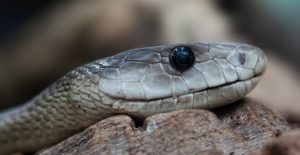If you are an avid hiker and no stranger to going on trails that may or may not have a known snake population on them, you may be a little averse to the presence of snakes. After all, wild snakes can be a threat to your safety and even your life. They may force you to abandon your hike entirely to get proper treatment and medical attention, should you find yourself on the wrong side of their fangs.
As with everything, however, it’s a little more complicated than that. Snake bites and snake venom are certainly a real and tangible thing, and they are something that you want to avoid at all costs.
But let’s think of a hypothetical scenario. Let’s say that while out on a casual hiking trip, you are one of the unlucky ones that got bitten on the trail. Maybe you were careless and accidentally entered the strike zone of one, causing it to lash out in self-defense before you even noticed it. Or maybe you weren’t even doing anything wrong and still ended up with a snake bite. Are you in danger?
Venomous vs. Non-venomous snakes
Of course, we’d need to first point out that not all snakes are venomous. In fact, only around 600 of the 3000 snake species all over the world are actually venomous, which is just 1/5 of all snakes. And even then, less than half of those snakes have deadly venom.
There are ways to tell apart venomous and non-venomous snakes. One supposed good way that many suggest is to look at their eyes, because venomous snakes have elliptical pupils, like that of a cat, while nonvenomous snakes have round pupils in their eyes.
I say supposed because while it may work for general identification at a glance, there are a lot of exceptions that break the rule. One such example is the inland taipan, which can be found in certain parts of Australia. One bite from this thing is enough to kill 100 full blown grown men. Oh, and their eyes are rounded like non-venomous snakes, so you can’t differentiate properly if all you rely on is looking at their eyes. This also applies to searching for infrared thermal sensing facial pits, which some venomous snakes may not have.
Long story short, if you see a snake, don’t try to guess whether or not it’s venomous or not and instead simply stay away. You’re not supposed to be approaching them in the first place.
What do I do if I get bitten by a snake?
Sometimes, even with the proper precautions, a snake bite may be unavoidable for whatever reason. Therefore, it is imperative that you receive treatment as soon as possible. Call for medical aid or have the people with you do it for you immediately. You’re in a race against time here, as depending on the type of snake, you may have a long chance of receiving an antidote or barely any time before you start feeling the effects.
Next, make sure you minimize movement as much as possible. This means not panicking and, yes, staying practically still after being bitten by a snake. However, this assumes that the snake has moved away from you after going in for the bite, and that you aren’t in danger of being bitten again.
If the snake is still nearby, get out of the way put as much distance between you and it as possible. After which, that is when you can place your legs down and rest. The best position to do so is to roll over to your side and rest in a recovery position. Don’t move around too much as this will cause the venom to spread through your body much faster.
Depending on the type of venom, it may be absorbed rapidly into the bloodstream, such as the neurotoxins of elapids and sea snakes, or it will be taken up slowly through your lymphatic system because certain venom molecules like that of the viper venom are larger.
Am I in danger if I don’t receive treatment?
The chances of actually dying after being bitten by a snake is rare. Some of the venom by snakes only have a 10% fatality rate, for instance. However, this does not mean that you should continue your hike and not get yourself treated if you do get bitten.
Certain snakes, like the king cobra for instance, have a much higher fatality rate. To be specific, you only have a 40%-50% chance of surviving if you are bitten by a king cobra and not treated. Not really good odds there…
But there’s something else you need to realize: Even if you survive in the end, your body may be permanently scarred because you weren’t treated. Your body may act up and you’ll feel terrible as you go through the symptoms, such as nausea, disturbed vision, and vomiting. But there are some cases where they can get extreme.
The saw-scaled viper‘s venom isn’t as powerful as a king cobra’s, as they only have a 10% fatality rate. However, what makes this snake such a monstrosity isn’t how it kills, but what happens to those who survive.
See, the venom of a saw-scaled viper has one more additional surprise: It devastates the tissues around the site of their bites. This means that people can lose toes, fingers, or entire limbs outright, and while 125,000 people die from bites from this snake every year, around 400,000 have to face amputations.
Do yourself a favor, and stay away from snakes, even if you think it may not be venomous. Don’t take the risk. If you do get bitten, seek aid as soon as possible. Modern medicine has made it so antivenom can help treat venomous bites and stings.

